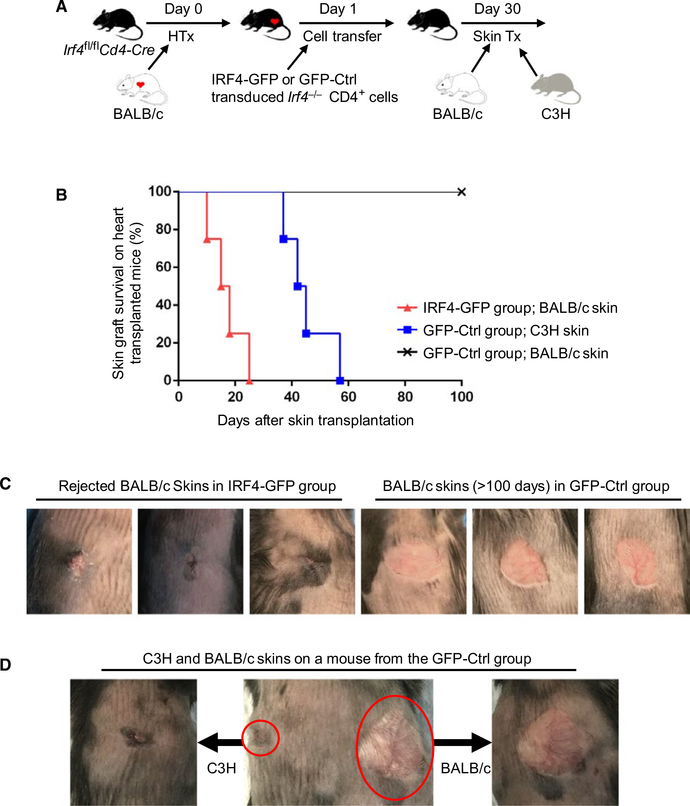FIGURE 2.
Adoptive transfer of IRF4 re‐introduced Irf4−/− CD4+ T cells breaks transplant tolerance in Irf4‐deficient mice. Irf4−/− CD4+ T cells were stimulated with allogenic BALB/c splenic DCs and IL‐2 for 3 days, followed by transduction with IRF4‐GFP or GFP‐Ctrl retrovirus for 1 day. Irf4fl/flCd4‐Cre mice were transplanted with BALB/c hearts on day 0 and adoptively transferred with one million IRF4‐GFP or GFP‐Ctrl transduced Irf4−/− CD4+ T cells on day 1. Thirty days later, recipient mice in the IRF4‐GFP group were transplanted again with BALB/c skins (n = 4), whereas recipients in the GFP‐Ctrl group were transplanted with both C3H and BALB/c skins (n = 4). A, Schematic of the experimental design. B, The percentage of skin allograft survival after skin transplantation on BALB/c heart‐transplanted Irf4fl/flCd4‐Cre recipients that had been adoptively transferred with IRF4‐GFP or GFP‐Ctrl transduced Irf4−/− CD4+ T cells. C, Representative images of rejected (left 3 panels) and accepted (right 3 panels) BALB/c skins on BALB/c heart transplanted Irf4 fl/flCd4‐Cre recipients that had been adoptively transferred with IRF4‐GFP and GFP‐Ctrl transduced Irf4−/− CD4+ T cells, respectively. D, A representative image of C3H (left) and BALB/c (right) skin allografts on a BALB/c heart‐transplanted Irf4 fl/flCd4‐Cre mouse that had been adoptively transferred with GFP‐Ctrl transduced Irf4−/− CD4+ T cells

